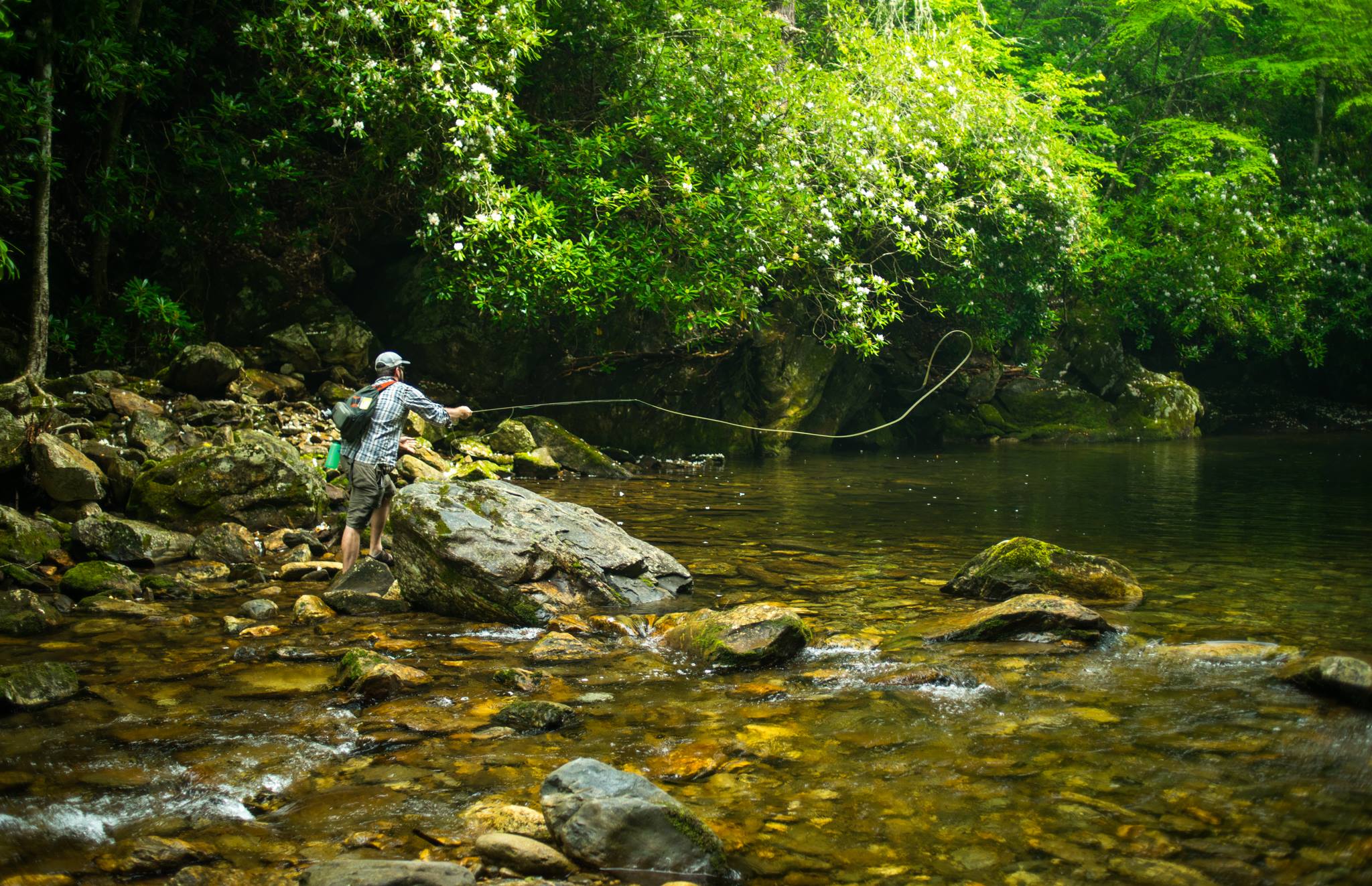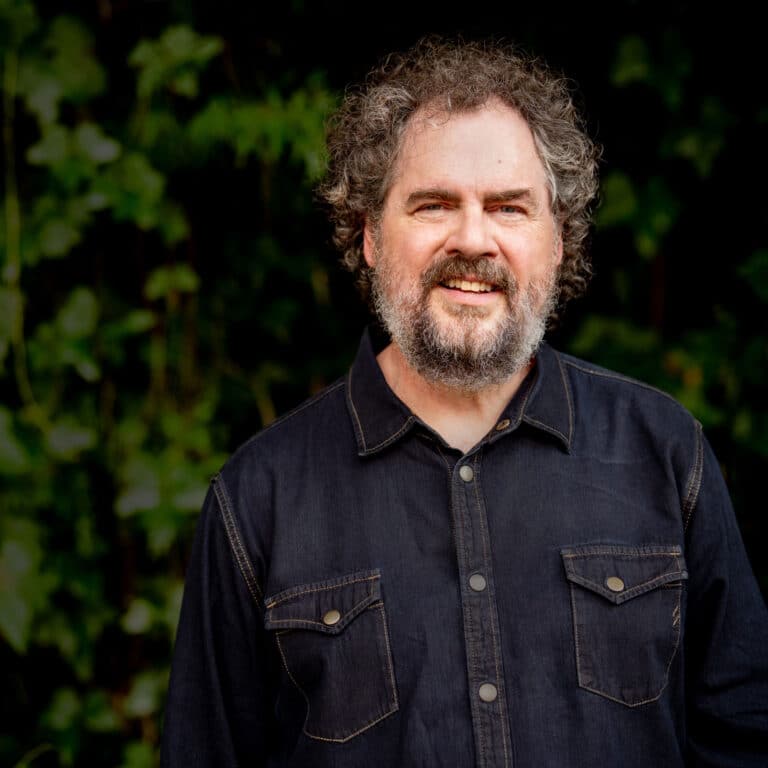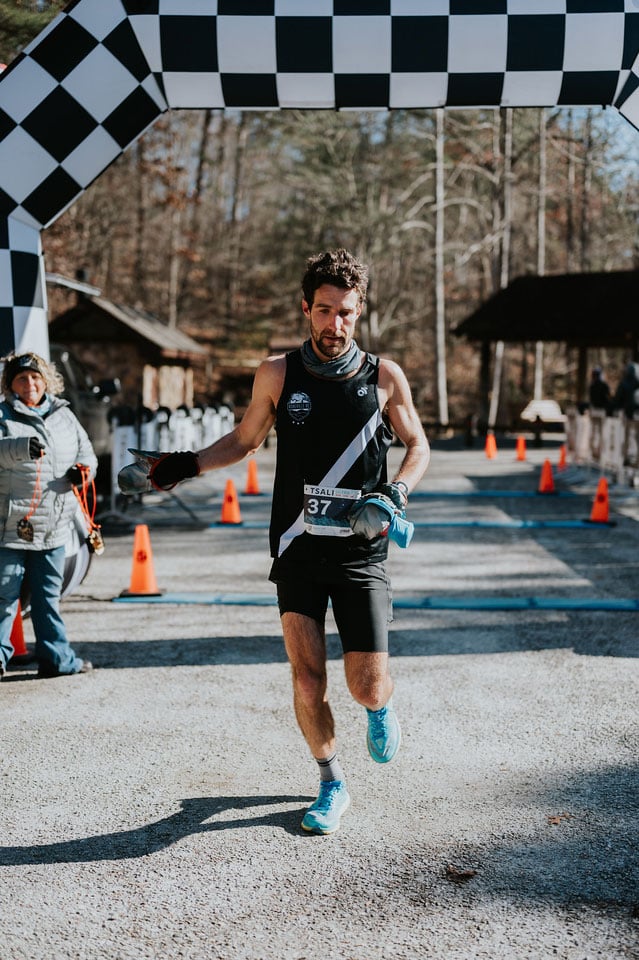Several years ago, my friend Dave Marsh and I were given access to a private stretch of Pennsylvania spring creek filled with wild brown trout, some of which grew quite large. In the clear water we could see over a dozen browns from eighteen to almost thirty inches. For the first few weeks we fished there as often as possible, but despite our stealthiest approach and long light tippets we couldn’t buy a strike. Good luck finally came our way in the form of a summer thunderstorm. Within a half hour the fast moving storm clouded and raised the water several inches. We switched to wooly buggers and dead drifted them under indicators. Within an hour we landed three browns from twenty to twenty-six inches. From that point on we planned our trips around the weather, hitting the creek any time a storm came through and dead drifting large nymphs and buggers under indicators. We’ve refined the technique over the years on that original stream and countless others from New York to North Carolina and have landed dozens of big browns and rainbows since then. What follows are some of the techniques, tackle, and flies that I use to go after big trout in high water.
1. Time and Place – This may seem obvious, but you’re not going to land a trophy trout on a stream that doesn’t have any. When fishing high water head for the nearest stream that you know holds big fish, any place you’ve encountered a big fish that you couldn’t hook under normal conditions, or even a stream that’s just rumored to hold big fish. This is also a great time to hit those spots that just scream big fish: deep holes, undercut banks, log jams, and any other place that could hold big fish that are normally nocturnal. Also, I’ve had much better results on wild streams. Fish size isn’t limited to what a hatchery can put out, so you have more potential for big fish, and they behave naturally, meaning you’ll have better shot at finding them in normal feeding lies, rather than where ever a truck dumped them.
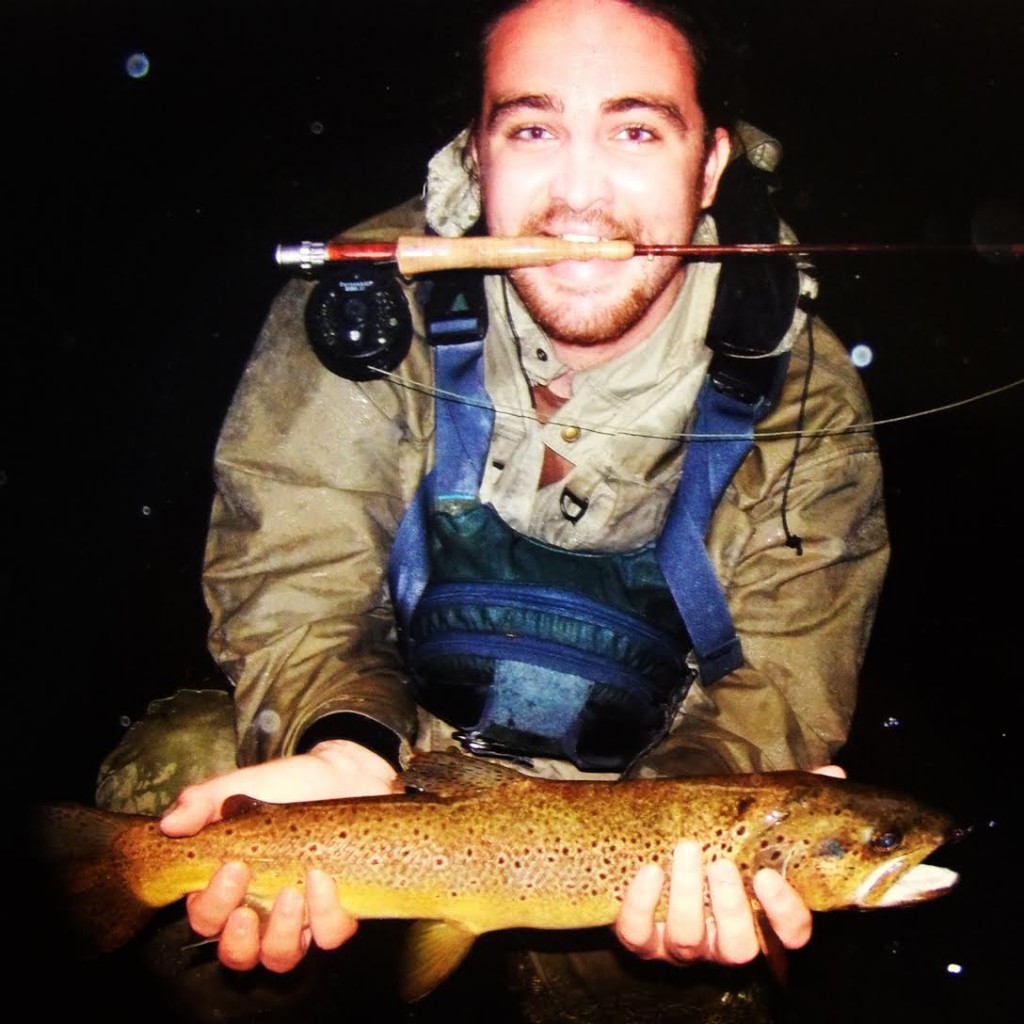
2. High, Off Color Water. Although in my experience thunderstorms provide the best results, almost any time the water is high and/or off color can give you a shot at your biggest fish of the year. An all-day rain, or in the case of tail waters, a dam release can get big fish feeding. About the only time I don’t fish high water is when it’s caused by snow melt. Even if it’s 60 degrees out, the melt water will be running over snow and ice making it just above freezing when it hits the stream. This will drop the water temperature and put fish down.
3. Flies – For this kind of fishing you only need a handful of patterns. I generally lean towards larger patterns tied in dark colors so that they stand out in off colored water. Since visibility is normally low during high water, I prefer patterns that “push” water. I tie my flies with chenille, thick webby hackle, and rubber legs that give off vibrations trout can pick up with their lateral lines. I weight all of my flies with bead heads, cone heads, or lead wire to get them down quickly.
4. Wooly Bugger – This is my go to during high water. I usually start with a size 6 or 8 with a bead or cone head and lead wire on the hook shank. I want my fly to push water to make it easy for the trout to find, so I tie them with thick marabou blood tails, the thickest chenille I can find for the body and palmer it with wide webby saddle hackle. I don’t normally tie my buggers with rubber legs, but this will add movement and vibration that the trout can feel, so you may want to buy or tie yours with them.
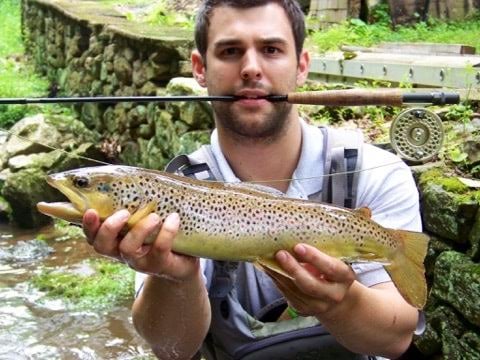
5. Clouser’s Crayfish – Even if the stream you’re fishing only has a few crayfish, big trout won’t pass up such a large, calorie packed meal. The Clouser’s Crayfish was originally designed as a smallmouth bass fly, but this pattern has caught numerous big trout for me, including my best wild brown, a fish just shy of 25 inches. I carry it in sizes 4-8, in tan, brown, olive, and orange. One note on this fly: resist the urge to retrieve it like you would for bass. Real crayfish will drift in the current at times just like nymphs. My best results with this fly have always come by dead drifting it near the bottom under a strike indicator.
6. Bead Head Prince Nymph – I carry princes from size 6 to 18. During high water I fish them from size 6 to 12 with bead head and lead wire to imitate large stone fly or mayfly nymphs. High water can dislodge the naturals, making them easy pickings for trout.
7. Other Patterns – Any large, weighted, buggy flies will work for this kind of fishing. Rubber leg stonefly nymphs and hellgrammite patterns fit the bill perfectly.
8. Tackle – I prefer 9 to 10 foot, 4 to 7 weight outfits with moderate actions. Heavier lines will turn over stiff leaders with heavy flies, an indicator and split shot. A longer rod will give you more reach for mending, and it will help cushion tippets against breaking, especially if it has a slower action. I prefer leaders around 9 feet long ending in a 1x to 3x tippet. Trout in high, stained water, are not leader shy, and a heavy tippet will help you land and release your fish quickly. There’s no sense in losing a big fish, or playing one too long on an unnecessarily light leader.
9. Indicators – For my everyday fishing I use wool indicators in natural colors to avoid spooking fish. In high off colored water there’s no need for this. I use a brightly colored hard foam indicator, or a thingamabobber. Either one can be adjusted easily, can hold up more weight than a yarn indicator, won’t sink, and they’re highly visible.
10. A Few Odds and Ends – If you’re doing this right you’ll be fishing in the rain, so a quality rain coat is a necessity. Make sure you buy one with tight neoprene wrist cuffs, this makes a huge difference in keeping your arms dry.
11. A Net – If your net is one of the models with a short handle and small, shallow hoops, leave it at home. I carry a long handled net with a long, wide hoop and deep mesh. Always approach the fish from the tail with the net in the water. Stabbing at the fish, or approaching it from the head is a great way to break off a fish at the last second. Think smooth but quick movements when netting.
12. Find a partner. And speaking of nets, having a fishing partner to net and play spotter will greatly improve your odds of hooking and landing a big trout. When fishing with a partner one usually fishes while the other spots; looking for signs of fish and keeping an extra set of eyes on the indicator. If we’re both fishing, when one of us hooks a big fish the other guy drops what he’s doing, grabs the net, and gets ready to land the fish.
13. Adjust your rig for the water. You’ve got the right gear and flies, you’re in the right place, its pouring and the creek is rising. It’s time to start fishing. Your indicator should be one to two times the water depth you’re fishing. Your fly and leader should be weighted enough so that your indicator drifts just a little slower than the bubbles on the surface. Thoroughly cover every good looking lie. I usually start my drifts close and fan my casts out further until I’ve covered the whole area, then move upstream. And when I say start close, I mean very close. Trout are not shy in dirty water, I’ve hooked twenty inch browns literally two feet in front of my toes. I keep the fly dead drifting as close to the bottom as possible, and if I’m not hooking fish, I adjust my indicator up or down until I start getting strikes. One last note: this is not a numbers game. You’ll most likely hook only a few fish in these conditions, but odds are they will be much bigger than average.
[divider]read more fridays on the fly[/divider]
